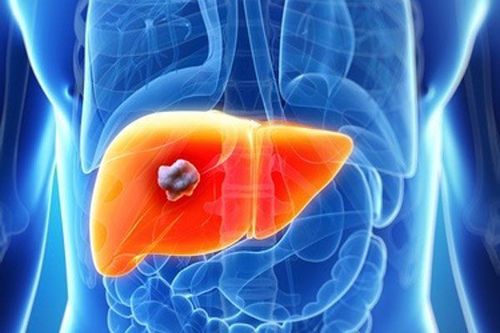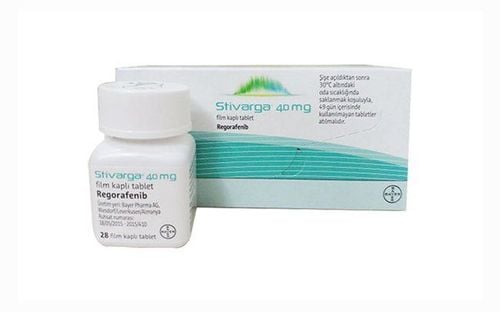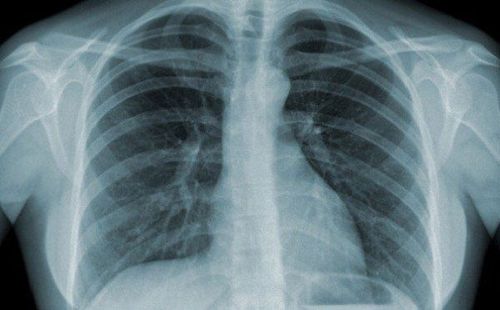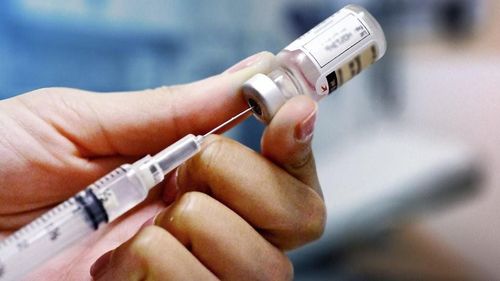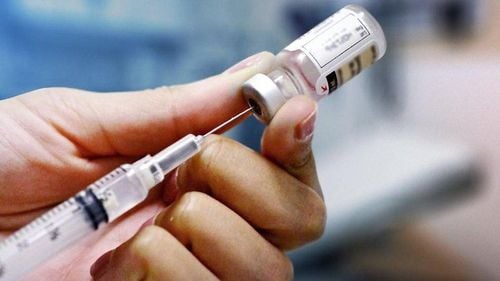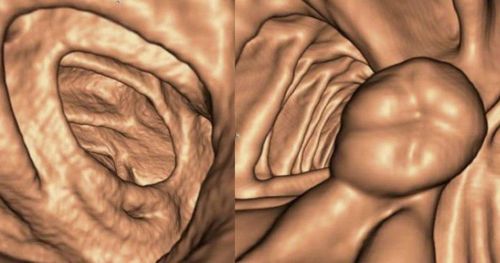This is an automatically translated article.
Computed tomography of the colon, also known as virtual colonoscopy (VC), was introduced in 1994 by Vining et al. They were the first to describe this modified computed tomography (CT Scan) test of the large intestine as a diagnostic test for colorectal carcinoma and polyps. Since then, virtual colonoscopy has become a test of essential importance in the imaging of polyps and occult colorectal cancer in patients unadapted to optical colonoscopy.
1. Virtual colonoscopy
Virtual colonoscopy has advantages over colonoscopy because of its less invasive nature, better patient compliance and the ability to detect extracorporeal disease. Therefore, virtual colonoscopy is an accepted screening test for colorectal cancer and is increasingly used. We must note that none of the findings on virtual colonoscopy allow us to distinguish adenomas from noncancerous polypoid lesions such as hyperplastic or inflammatory polyps, so histological study is necessary. necessary in all cases. One of the limitations of virtual colonoscopy is that it often misses flat lesions such as flattened polyps.
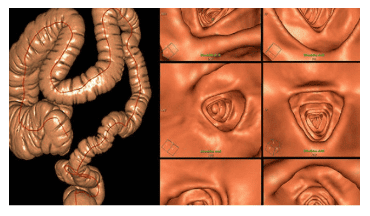
Hình ảnh nội soi đại tràng ảo
2. CT Scan of abdomen without contrast after incomplete colonoscopy
Practice regarding virtual colonoscopy after incomplete colonoscopy should be discussed as this may also increase radiation dose; for example, some centers perform an unenhanced CT scan of the abdomen after an incomplete colonoscopy, to rule out perforation; although there is evidence that this is not necessary. Perforation is a recognized complication of colonoscopy. The reported perforation rate ranged from one case in 3115 procedures (0.032%) to one case in 510 procedures (0.196%). The short interval between an incomplete colonoscopy and a virtual colonoscopy on the same or the next day may not be sufficient to allow some perforation to become clinically apparent.
Because the risk of exacerbation of perforation is not clinically anticipated with virtual colonoscopy, which may increase the risk of sepsis, screening for the presence of gas in the colon is recommended. abdominal cavity prior to virtual colonoscopy may be beneficial for potential perforation in these patients. Colonic perforation after colonoscopy can be a clinical mystery. Recent studies have shown that several findings support low-dose diagnostic CT scanning prior to rectal tube placement and reduced gas in all patients referred for same-day virtual colonoscopy. or the day after an incomplete colonoscopy to reduce the risk associated with a worsening of the perforation
3. Risk of radiation exposure
The main disadvantage of virtual colonoscopy is ionizing radiation, especially because virtual colonoscopy has been considered as a screening tool for colorectal cancer. Radiation dose significantly determines CT Scan image quality, diagnostic accuracy, and clinical utility. Radiation dose reduction strategies are used to maintain and improve image quality. The dose should be reduced only if one can preserve the diagnostic image quality for the particular pathology.
It is essential to understand the relationship between image quality and radiation dose to optimize radiation dose during virtual colonoscopy. The dose of virtual colonoscopy is lower than that of conventional CT Scan, about half the dose, due to the high natural contrast between the soft tissue of the colon wall, vaginal discharge, and fecal residue and tagged fluid. For insight, it makes sense to compare the dosages of different diagnostic procedures with the dose of chest X-rays or the number of years of exposure to natural background radiation, which ranges from 1 to 2. 3 mSv/year, depending on geographical area. Thus, mammography has a dose of 0.13 mSv, corresponding to 6 chest x-rays or 14 days of background radiation. An average abdominal CT scan has 5-25 mSv, which corresponds to 250-1250 chest X-rays or 2-11.5 years of background radiation, depending on the number of stages required to confirm the suspected diagnosis.

Tối ưu hóa liều bức xạ trong nội soi đại tràng ảo giảm nguy cơ phơi nhiễm bức xạ
4. Radiation Dose and Cancer Risk
The effects of radiation and its risks are usually estimated based on linear extrapolation of the cancer risks associated with extremely high doses from the atomic bomb victim studies in Hiroshima and Nagasaki. However, there is no clear evidence of cancer initiation at low doses and this issue remains controversial. In 2016, Health Physics organization announced that radiation lower than 100mSv has no effect on the human body. Assuming that the mean virtual colonoscopy dose is 5mSv, that means the theoretical cancer risk would be 0.04% in 50-year-old patients and 0.02% in 70-year-old patients after screening. initial filter.
Keeping in mind that the lifetime risk of developing colon cancer is about 5%, the benefits of virtual colonoscopy outweigh its estimated radiation risks. The current dose of virtual colonoscopy in many settings is even lower than 3mSv, a dose comparable to annual radiation exposure in some countries such as the United States. Since the age of colorectal cancer screening is over 50 years of age, exposure levels are significantly reduced, and therefore the risk of radiation-related cancers is even lower. As the percentage of human dividing cells declines with age, this further increases the safety of virtual colonoscopy for the aging population it primarily serves. It is important to consider the mean frequency of each visit in the population and the mean radiation dose with each technique to understand the radiation dose of virtual colonoscopy in the context of other ionization techniques. .
However, all examination-based techniques (radiography, fluoroscopy, CT Scan, positron emission tomography-CT Scan, scintigraphy and interventional cardiology) accounted for 34% of the total population dose. annual number. It is important to emphasize that a virtual colonoscopy is quite different from a conventional CT Scan examination. The inherently high contrast between the air-filled colonic lumen and the soft-tissue deterioration of the colon wall allows for a reduction in the dose involved without sacrificing diagnostic accuracy.
Please dial HOTLINE for more information or register for an appointment HERE. Download MyVinmec app to make appointments faster and to manage your bookings easily.




